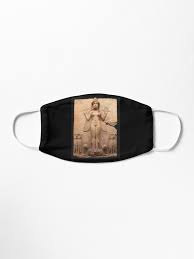
In a previous article, I wrote about how Hollywood and the media push seemingly innocuous fashion trends upon the general public that, unbeknownst to them, are steeped in paganism and the occult. Those seeking to emulate cutting edge fashionistas and pop culture icons, believing themselves to be at the fore of mainstream relevancy are, in actuality, being duped into unwittingly paying homage to false gods and demons.
It should come as no surprise that Hollywood is nothing more than a cult that worships the pantheon of Sumerian, Cainite, and Babylonian gods such as Molech, Horus, and Ishtar (i.e. Inanna, Aphrodite, mother of Tammuz, Queen of Heaven), et al.
Aphrodite was the goddess worshiped by the Corinthians, of whom Paul exhorted, “Your body is not your own, you were bought with a price.” (I wrote extensively on Aphrodite here). The reason Paul used this particular line of logic is because the temple of Aphrodite was the “Red Light District” of ancient Corinth. It was impossible to worship Aphrodite apart from sadistic sex rituals, orgies, and homosexuality..
I recently stumbled upon a picture online—a picture that would have otherwise went by unnoticed were we not in the current climate of COVID-19. It was a picture of a Mesopotamian alabaster statue dating back to the 1st century A. D. The statue of Ishtar, replete with bronze devil horns, is housed in the Metropolitan Museum of Art, located on 5th Avenue in New York City—one of the predominant fashion capitals of the world.
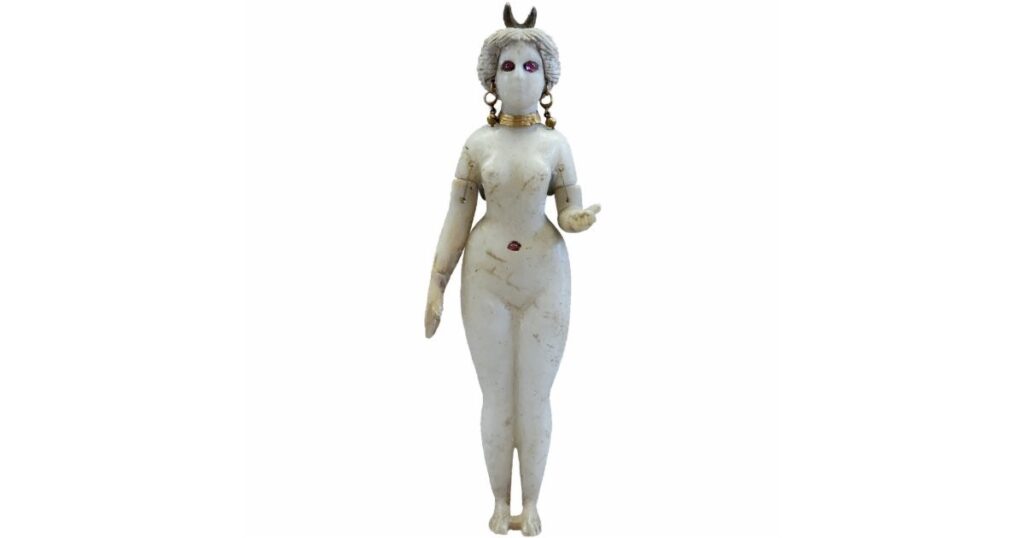
What struck me was, at first glance, the muted facial features, almost make the statue appear as if Ishtar is wearing a face mask. This is very curious. Why would a 1st century artist depict the Queen of Heaven with a shielded face—and is this mask mandate, imposed upon all of mankind, some sort of ritual designed to maliciously maneuver the masses into taking on the image of this goddess?
Furthermore, is there some deeper significance or connection to housing this statue at the Met, and the annual Met Gala—a $30,000 a plate fundraising benefit, primarily attended by the rich and famous, the royals, and the Hollywood elite? And is there some etymological connection between our modern use of the word “gala” and the galas of antiquity–the galas being a special kind of priest whose primary duties were to sing laments and perform homosexual sex acts?
The Met Gala, formally known as the Costume Institute Gala or the Costume Institute Benefit (or the Met Ball) looks a bit like a scene out of Stanley Kubrick’s “Eyes Wide Shut” film—and we all know what that is about.

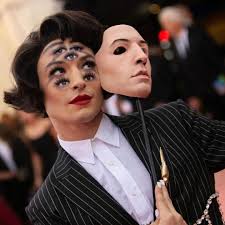
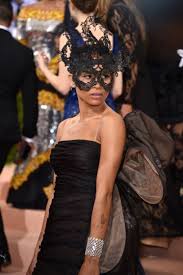
The annual gala has been held every year since 1973 (with the exception of this year, due to COVID-19); and each year features a theme, to which participants wear elaborately expensive haute couture gowns and costumes that correspond to that year’s theme.
There have been several themes throughout the years that smack at some rather bizarre, if not altogether occultic, subject matter. Take for example, 2016’s theme Manus x Machina. The Business of Fashion website, in an attempt to unpack the crux of this theme, summarized, “The mediator between the HEAD and HANDS must be the HEART.” Bolton notes that it could have equally read: “The mediator between the HAND and the MACHINE must be the HEART.”
But it does not end with Transhumanism. 2018s theme was “Heavenly Bodies: Fashion and the Catholic Imagination.” Are any of you old enough to remember when the Vatican publicly condemned Madonna’s “Like a Prayer” video back in 1989? Well, apparently, they’ve all seen the light (maybe with the aid of their L.U.C.I.F.E.R. telescope) because as of 2018, the fine line between pop culture and the papacy no longer appears to exist.
Another possible synchronicity is that Nicki Minaj showed up in 2018 dressed as the devil, boasting to photogs, “I’m the bad guy [expletive], so, I’m dressed as the devil!” Later, when asked to comment on her Oscar de la Renta gown, she gushed, “I do feel like a Queen!” Hmm. I wonder if she meant to say, “Queen of Heaven”?
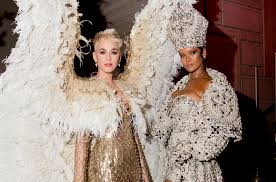
2017 was the rather disturbing theme, “Comme des Garçons: Art of the In-Between.” Comme des Garcons roughly translates, “like boys,” which, when coupled with the concept of “in-between” appears to be promoting a transgender or hermaphroditic agenda, which falls right in line with Aphrodite (Inanna) worship. To this point, R. S. Benedict, in his article, “How a Sumerian Goddess Turned Gender on its Head” writes, “But it looks pretty clear that the goddess Inanna oversaw a ceremony referred to as the head-overturning, by which a man was transformed into a woman, and a woman transformed into a man.”
Perhaps the strangest costume of 2017, was Katy Perry’s ode to Satan’s bride (her own words, not mine), complete with the word “witness” and an All-Seeing Eye scrawled across her forehead. Many entertainment rags “innocently” compared Perry’s dress to that worn by Winona Ryder in the film, “Beetlejuice,” where she is depicted as preparing for her marriage to Beetlejuice, wearing a red wedding dress.
Betelgeuse, according to the film’s story creator, Michael McDowell, is “a winged demon, who takes on the form of a short Middle Eastern man–is also intent on killing the Deetzes rather than scaring them, and wanted out-and-out sex from Lydia instead of wanting to marry her.”
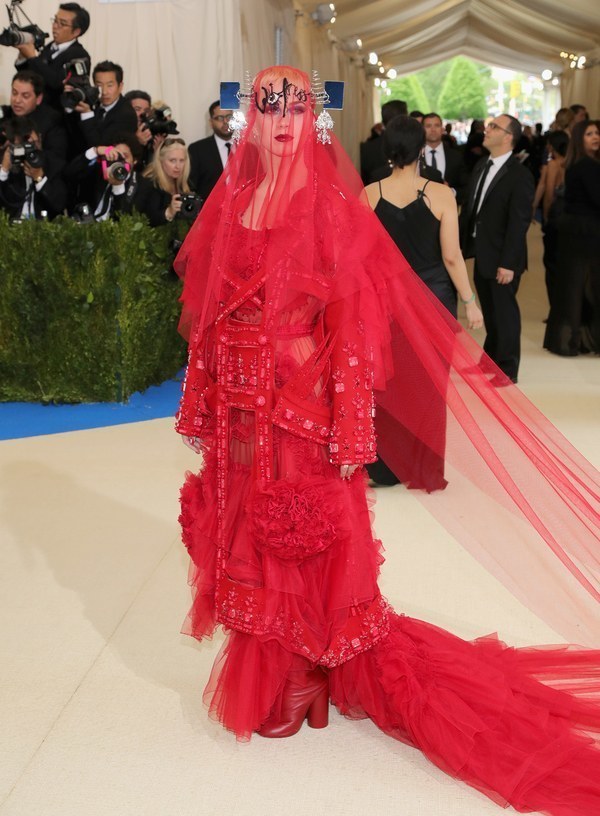
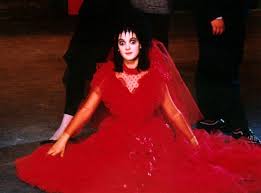
In 1979, the theme was, “Fashions of the Habsburg Era.” For those of you unfamiliar with the phrase, “the Habsburg jaw,” it is, according to the Smithsonian magazine, “the ungainly facial features” (primarily an over-exaggerated jaw), the result of incestuous inbreeding among the German-Austrian royal family. Now, how far to the bottom of the brainstorming barrel do you have to scrape to unanimously settle on this as the theme of your costume party?

Eat your heart out, Jay Leno!
There are many other strange themes, but I think you get my point.
The question is, why are these elaborate costumes and this annual ritual associated with an art museum—an art museum which houses, not just one, but many statues of Aphrodite and Ishtar? According to the World of Wonder website, in their 2018 article entitled, “Did You Know the #MetGala Was Just a Front for Satanic Rituals?” includes links to several You Tube videos where researchers have gone through various Met Gala events with a fine tooth comb, revealing all sorts of hidden (and not so hidden) Luciferian symbolism.
All this to say, no matter what the media pushes on the public as “cutting edge” fashion, whether it is something seemingly hip and desirable, or something as undesirable as a medical mask—we must question everything. There is meaning behind everything that they do, and it is not always the meaning being touted by the media or the pop culture icons.
1 John 4:1-6 warns us to test every spirit to see whether it is of God. This includes hair, makeup, and clothing trends. Trending topics on Twitter, hashtag movements, social media “challenges,” films, and fleeting fads. Satan is the god of this world (2 Corinthians 4:4), and his greasy fingerprints are all over everything.
For similar articles pertaining to the cult of Hollywood, see also:
The Joke’s on You, Truthers! (Ricky Gervais, Golden Globes monologue)




